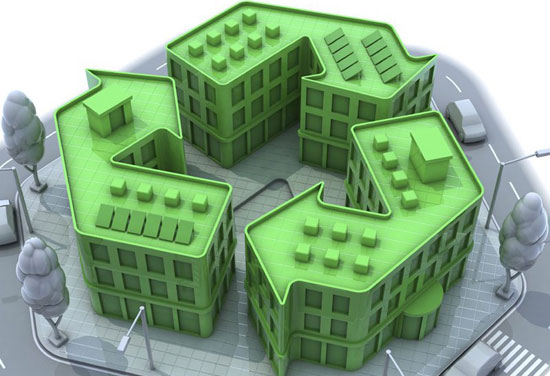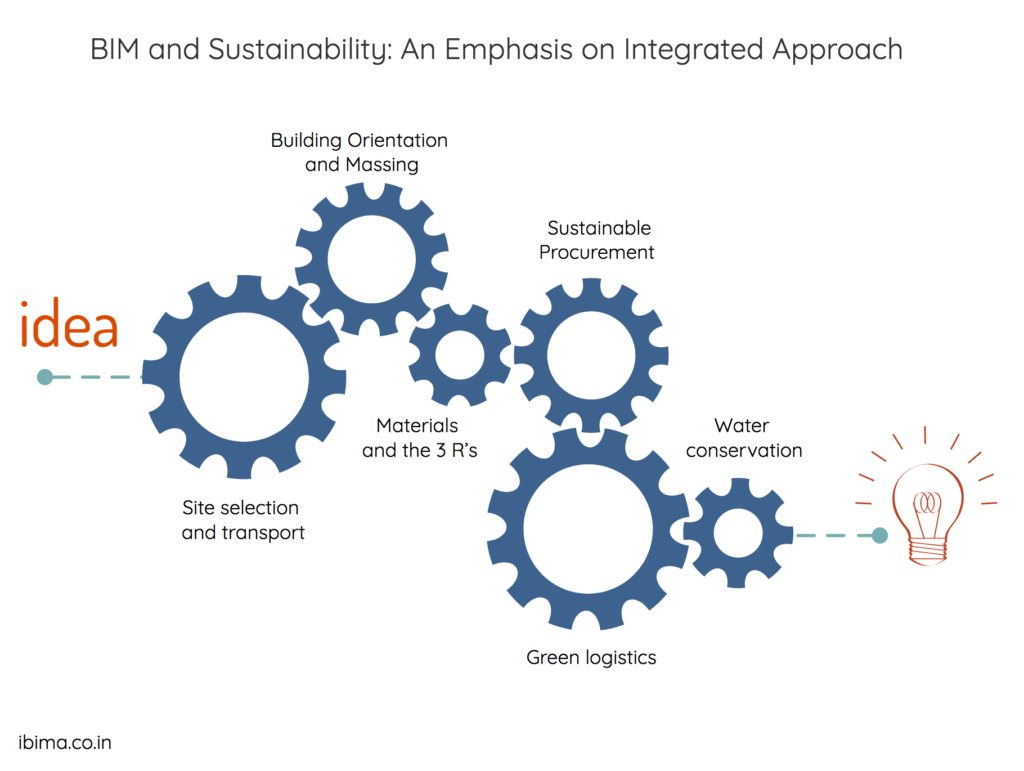BIM and Sustainability: An Emphasis on Integrated Approach.
The pursuit of sustainability has become one of the principal design objectives in the construction industry and in response to this concern the integration of Building Information Modeling (BIM) and sustainable practices is far-reaching.


Figure 1: Interactions between buildings and environment.
Site selection and transport
Building Orientation and Massing
Materials and the 3 R’s
Sustainable Procurement
Green logistics
Logistics is another environmental concern as it includes activities (such as flow of products, information and services between the points of inception to consumption) that can have serious implications on the ecological and economical balance. As a result, the concept of ‘Green Logistics’ emerged that outlines the attempts to measure and mitigate environmental impact of logistics activities by characterizing its approach to the use of advanced technology and equipment; for instance, efficient packaging and inventory management, optimizations of route and loading, service networks and support.
Water conservation
Water is a precious commodity as statistics confirm only 0.3% at our grasp for consumption. In construction sites, key water-using processes include temporary accommodations, wet trades (brickwork, concreting and plastering), groundworks including grouting and drilling, dust suppression, hydro-demolition, cleaning of tools and equipment washing, commissioning and testing of building plant and services (Water Action Plan UK, 2011). Wastage from these processes constitutes a massive amount. Efficiency in water usage and minimizing losses in the industry is a major and crucial step towards sustainable water management.
Conclusion
BIM has the potential to extend beyond the mere confinements and expand to quantify more environmental aspects. Integration of BIM and environmental assessment certifications and analysis software are at nascent stage, nonetheless, the valuable data that BIM can generate will provide a possibility to integrate detailed modeling capabilities and most importantly, environmental performance data that BIM can easily pull to check for instance, water requirements of operational buildings in case of water crisis due to climate change. As daunting as it could be, although the movement has picked up its pace in the current era, it has yet to be effectively exploited within the AECO industry and disconnections are highly evident (Dowsett and Harty, 2013). Global as well as nationwide efforts to spread the awareness of Building Information Modeling are commendable and needs to be carried out at all possible levels until it penetrates every working cell of the industry.
Author: Rikrey R Marak
Source: http://ibima.co.in/2017/05/28/bim-and-sustainability-an-emphasis-on-integrated-approach/












